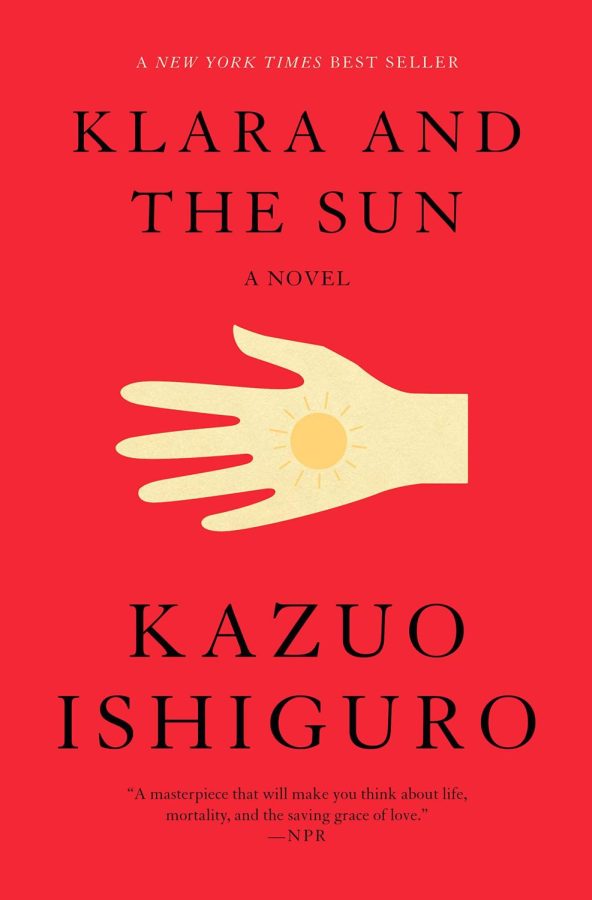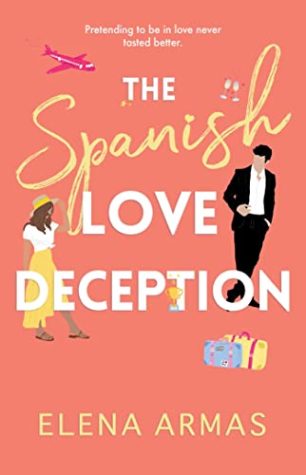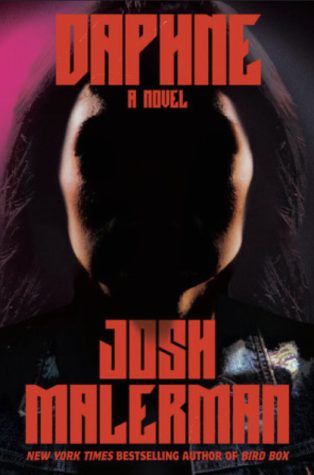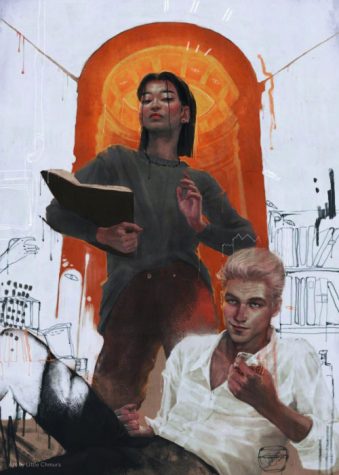Klara and the Sun is a future literary classic

More stories from Lauren Brace
The cover to Kazuo Ishiguro’s novel Klara and the Sun
There’s an undeniable allure to books with a simple cover—drawing the reader in with its simplistic design and the mystery of what the story inside will hold. After the initial attraction, the introduction is the next phase of flirting with books. It is here that most dates flop and end with a shrug and rejection; however, after reading the synopsis to Klara and the Sun, I was hooked—full-heartedly willing to ride the roller coaster of my newest relationship.
Klara and the Sun features an AI companion: artificial intelligence whose purpose is to protect the life of a human friend. The scene is set in a store, where Klara lives out her initial days beside other android companions. As the first rays of sunshine sparkle through the windows of the storefront, the audience is informed that Klara gets her energy from the sun.
With this piece of information coming into play again, Klara is overjoyed when she is placed in the front window display, for she now has the opportunity to view the outside world and receive maximum nutrients from the sun. As expected from the title, the great glowing orb proves to be a salient symbol for the rest of the story.
Although Klara’s abilities aren’t as advanced as the B3 generation, it becomes evident that she is unlike other androids due to her curiosity and observational skills. In the beginning, readers are faced with the juxtaposition of the various AI generations. The most recent generation is spoiled with advancements, and yet, they are arrogant and impertinent. The B1s are pushed aside as they are too far behind to keep up with the technology that succeeded them. Meanwhile, Klara’s B2 generation presents a happy medium.
This subtle satire in reference to our own world is just one of the many societal beliefs that author Kazuo Ishiguro alludes to. It was brilliant to craft a story with thoughts that come from the mind of a robot, for Klara provides a clean slate, immersing herself in every scene with extreme innocence coupled with an intense yearning to understand.
Slowly, the AI voice I had imagined morphed into the voice of my AP Language and Composition teacher as I pictured her reading it aloud to our class. The rhetorical devices sprinkled throughout the novel were undeniable, and the way in which a robot mind would slowly evolve to understand the interactions of humans instantly reminded me of literary classics such as Flowers for Algernon.
Eventually, Klara meets her main focus of the story: Josie. With this 14-year-old child to look after, there is no length that Klara won’t travel to ensure the safety of her friend. It’s surprisingly heartwarming to read along the journey of an android discovering all the joys and griefs that come with human life; every decision, even the smallest ones, can alter the entire trajectory of future existence.
Later in the novel, the dystopian world poses the question asking if we’ll be able to live with what we’ve created. Ishiguro’s storytelling even has the reader questioning if there is any part of a human that ultra-advanced technology couldn’t replicate.
There was something very special, but it wasn’t inside Josie. It was inside those who loved her.
— Kazuo Ishiguro, Klara and the Sun
Furthermore, I was shocked to realize that I didn’t truly dislike any of the major characters in the novel; even with countless flaws, Klara and the Sun forced the reader to see a broader picture. Perhaps this was easier due to the fact that Klara only provided the reader with facts, and no character was introduced with a prior prejudice.
I was once again transported back to my own English classrooms as there were constant foreshadowing moments that suggested an underlying problem within society and Josie’s household that was never directly mentioned. In those moments, I wanted to turn to my book club table mates and hear their thoughts as to what future events may entail.
I would clearly recommend Klara and the Sun to any reader looking for a creative plot and heartwarming character connections; however, this book especially belongs in the English classrooms where the countless themes, symbols, and theoretical questions can be properly analyzed and appreciated for all their worth. With the next generation, I hope this novel is able to bask in its literary glory as it finds its place in the sun.

Lauren is a senior entering her final year on The Central Trend as Podcast Manager. She has a strong passion for every extracurricular she's involved in,...
































































































elpro3113v • Apr 23, 2022 at 11:16 pm
It was a very good review, I want to read the book!!